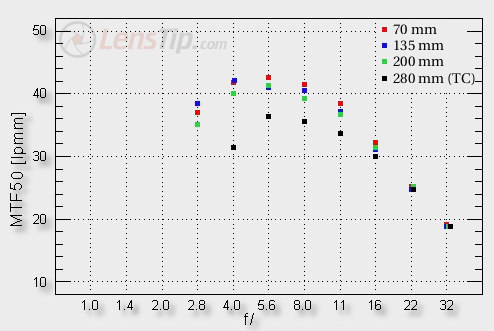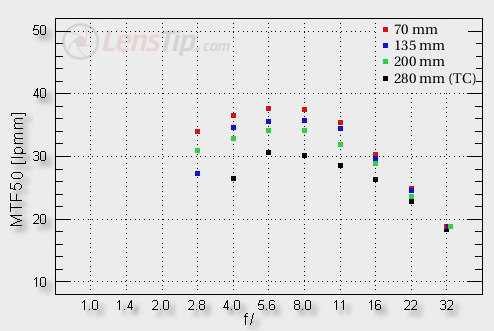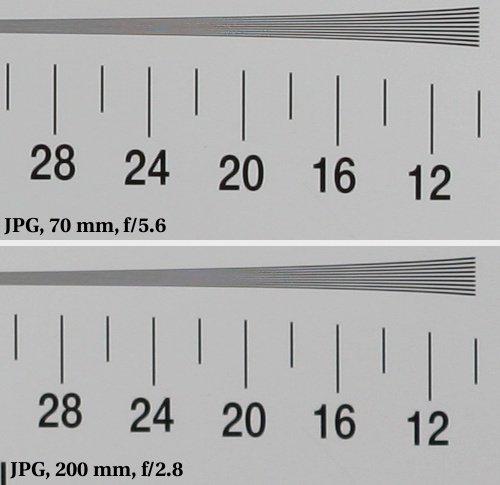Tamron SP AF 70-200 mm f/2.8 Di LD (IF) MACRO
4. Image resolution

Looking at the chart above we see clearly that the Tamron shows its more expensive competitors their place in the row. The maximum aperture is sharp at all focal lengths and even at 200 mm it reaches the level of 35 lpmm. On stopping down slightly, the results become even better – they cross the 40 lpmm level. The even results, presented by the lens, deserve our praise – the 200 mm focal length doesn’t stand out from the shorter range behaviour.
Please Support UsIf you enjoy our reviews and articles, and you want us to continue our work please, support our website by donating through PayPal. The funds are going to be used for paying our editorial team, renting servers, and equipping our testing studio; only that way we will be able to continue providing you interesting content for free. |
- - - - - - - - - - - - - - - - - - - - - - - - - - - - - - - - - - - - - - - - - - - - - - - -
What’s more, from all the 70-200 mm f/2.8 class lenses, it’s the Tamron which cooperates the best with a converter (of course as long as the image resolution is concerned). It’s even more impressing as we used a Sigma converter; Sigma should be ashamed that the Tamron with a Sigma TC works a lot better than Sigma lenses.

The situation is alike for the frame edge – very good. At wide aperture the Tamron behaves a bit better than the two Ls, because for both focal length range ends it crosses the 30 lpmm level, and the Ls have failed to do that. Then, the Tamron fares almost identically as both Canons.
This chapter can be summed up by a round of ovation for Tamron. This company once again proved that it can manufacture fabulous optical instruments. It is also an example that modern constructions can have a significant edge over the older ones. Both L lenses have been designed some time ago to work with an analog camera, so, although they are noticeably more expensive, when the optics is concerned they stand out in a negative sense from the cheaper but newer Tamron.







